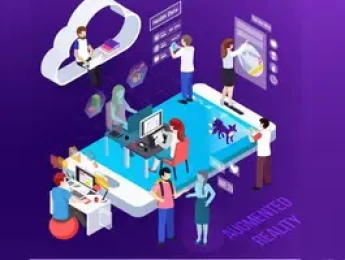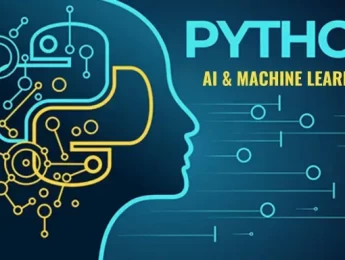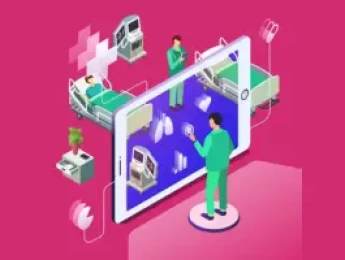Technology is constantly advancing, and to keep up with the demands and trends of the industry, wireless networks must be updated to match. The progression of wireless networks was slow-moving, but in recent years, new advancements have been made at a rapid rate.
Wireless networks are the method by which technology shares data and is utilised by almost every home and organisation within the modern world. For an engineer, it is crucial to have an in-depth understanding of how these networks work. Networks are multilayered, containing several different nodes, frequency bands and channels. There are many types of networks too; LAN, WLANS, cellular networks and more. Each one has its own unique characteristics that greatly differentiate its function from others.
These networks will also share many similar components and architectures. There are newly developed technologies, and evolutions of previously existing ones, such as LTE to 5G. To predict future developments or trends, it is important to reflect on previous technologies to gain a full understanding of their concepts and services.
Upon completion of this course, participants will be able to:
- Review the fundamentals of wireless networks.
- Recognise the different wireless technologies.
- Evaluate the advantages and disadvantages of different wireless networks.
- Identify different technologies by their IEEE code.
- Assess trends within the industry and how wireless networks have been adapted.
- Understand the architecture of wireless networks.
- Comprehend the modulation, coding and other key features of 802.11.
- Ensure wireless networks are completely secure for users.
- Maintain effective performance of wireless technologies.
- Compare previous networks and how technology has evolved.
- Predict future changes in network demand.
This course is designed for anyone responsible for wireless networks who wishes to develop their knowledge and skills. It would be most beneficial for:
- IT Professionals
- System Engineers
- Electrical Engineers
- Electrical Engineering Managers
- System Analysts
- Network Professionals
- Technical Managers
- Communication Specialists
This course uses a variety of adult learning styles to aid full understanding and comprehension. Participants will review established wireless networks to highlight key features and identify what protocols may be in place.
They will be supplied with the best tools in the industry to carry out the provided learning experiments efficiently. Furthermore, participants can demonstrate practical skills, such as based positioning. Combined with practical demonstrations, group discussions, and video materials, participants will have ample opportunities to develop a complete and comprehensive understanding of the taught content.
Day 5 of each course is reserved for a Q&A session, which may occur off-site. For 10-day courses, this also applies to day 10
Section 1: Introduction to Wireless
- Defining what a wireless network is.
- Review previous standard wireless networks and recognise how technology has evolved.
- How previous technologies are incorporated into the newest networks.
- Predicting future technologies and how the current may be utilised further.
- Identifying technologies by their assigned IEEE codes.
- The role of the Institute of Electrical and Electronics Engineers within the industry.
Section 2: 802.11 Variations
- The types of 802.11 technologies - WPAN, LR-WAN and WBAN.
- Understanding the different frequency bands and channels of 802.11.
- The principles and protocols of 802.11.
- How regional power saving initiatives have influenced 802.11 effectiveness.
- The different modulation schemes used within 802.11 - CCK, DSSS, OFDM and QAM.
Section 3: 802.11 Standardisation
- The importance of 802.11 based positioning.
- Methods of based positioning - fingerprinting and Geometrical.
- Utilising the Fine Time Measurement (FTM) and Time-of-Flight (ToF) to calculate network Round Trip Time (RTT) to aid in positioning.
- Consider the variety of factors that may influence connectivity and positioning within a building.
- Licence-exempt operation.
Section 4: Implementing 802.11
- Principles of radio frequencies for specific bands,
- Enhanced directional multi-gigabit (EDMG) performance.
- Using neural networks to gather necessary data to make further improvements.
- Creating hybrid radio interface to match EDMG performance.
Section 5: 5G and the Future of Technology
- How technology has progressed from 3G to 5G.
- The driving forces influencing technology.
- Alignment of LTE and 5G to achieve a positive outcome.
- Establishing strong cybersecurity measures to ensure user and network safety.
- The requirements for 5G to be effective.
- Data communication and transmission considerations.
Upon successful completion of this training course, delegates will be awarded a Holistique Training Certificate of Completion. For those who attend and complete the online training course, a Holistique Training e-Certificate will be provided.
Holistique Training Certificates are accredited by the British Assessment Council (BAC) and The CPD Certification Service (CPD), and are certified under ISO 9001, ISO 21001, and ISO 29993 standards.
CPD credits for this course are granted by our Certificates and will be reflected on the Holistique Training Certificate of Completion. In accordance with the standards of The CPD Certification Service, one CPD credit is awarded per hour of course attendance. A maximum of 50 CPD credits can be claimed for any single course we currently offer.
- Course Code IND02-102
- Course Format Online, Classroom,
- Duration 5 days













